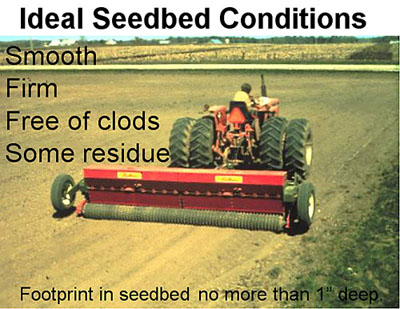Competency Area 3: Tillage Systems
PO 15. Describe the ideal seedbed conditions for corn, alfalfa, perennial grasses, small grains, and soybeans.
|
|
Alfalfa and perennial grasses |
Corn, soybeans, and wheat
Seed size is large and most modern corn planters and grain drills can handle a considerable amount of surface residue. Consequently, seedbed conditions are less important and all three crops can be successfully planted into almost any type of field condition. Soil crusting and soil moisture availability are critical factors in the success of soybean establishment so no-till conditions generally reduce soil crusting problems and improve soil moisture conditions. Soil temperature is of major importance to early-planted corn so high residue conditions can reduce stand establishment in early-planted corn and delay early-season development. Wheat stand establishment is almost always successful so field conditions are not a major factor.
Quick Links
- Competency Area 1: Crop Adaptation
- Competency Area 2: Crop Staging, Growth, and Development
- Competency Area 3: Tillage Systems
- Competency Area 4: Seeding Factors
- Competency Area 5: Seeding Rates and Row Spacing
- Competency Area 6: Considerations in Replanting Decisions
- Competency Area 7: Forage Harvesting Factors
- Competency Area 8: Cropping Systems

